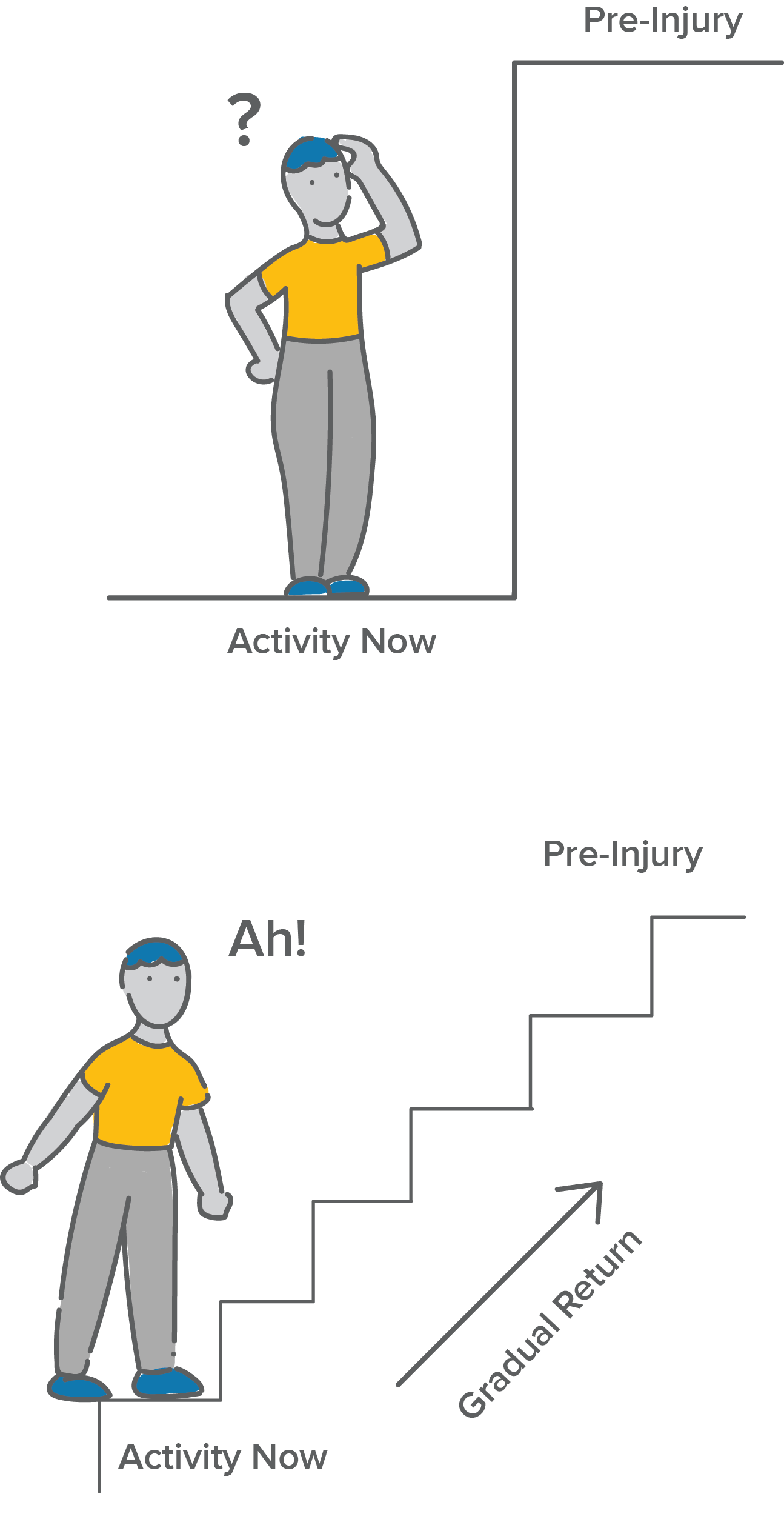Volunteer and Part-time Work
Key Points:
- Returning to school is generally recommended before returning to work or volunteering.
- Seek medical advice regarding your return-to-work plan.
- You may benefit from work modifications or job accommodations.
- Avoid all work-related activities that have a risk of head impact or falling until you have medical clearance to resume high risk activities.
Where to begin?
It’s recommended that you return to school and your recreation/leisure activities before returning to work or volunteering.
Once you have returned to school and meaningful activities and are managing well, you can start thinking about what your return to work/volunteer plan might look like.
Are you ready?
Readiness to return will vary from person to person because everyone’s symptoms and job demands are different.
Returning to work or volunteer roles before you are ready may cause an increase in symptoms. This can in turn impact other important parts of your life, like school, sport performance, and social activities.
You may be ready when you can manage a full week of school as well as your preferred after-school activities (e.g. hanging out with friends or participating in your sport) without an increase in symptoms.
Medical Guidance for Return to Work/Volunteer Roles
If you work in an environment that has any risk off falling or being hit in the head, speak to your doctor to ensure you are “safe” to return. Your health team can also help you with guidance around any temporary job accommodations, a gradual return-to-work schedule, and duties, and a doctor's note if needed.
This medical note can be provided to your manager or HR department (if appropriate) to help guide this process.
See sample medical clearance letter [PDF] from Concussion Awareness Training Tool (CATT).
Gradual Return to Work is Best
The idea of a gradual return to work plan is to start with an amount that is manageable, and make small, gradual increases towards your regular work hours and job demands.
You could try starting with shorter shift times or lighter duties, and gradually build up as you are able to tolerate.
You could also try working once per week, then increase the frequency as you are able to tolerate.
If you need further support with coming up with a plan, your family doctor can help.

What is a job accomodation?
This is a change to your regular work role that makes it possible to return to work when you still have some symptoms.
Common examples include:
- Changes to work hours, days of work, or frequency of work
- Changes to work environment (e.g. adjusting lighting or the provision of a quiet space to take a break)
- Changes to work duties to ensure you do not have another head injury and that you can tolerate your symptoms (e.g., doing more administrative work if you usually have a job that includes moving heavy boxes, or decreasing time on computer-based tasks if screen time is making you feel a lot worse)
Next Steps
Once you have returned to work or volunteer roles, it’s helpful to check in with yourself regularly. If you find that you are struggling with symptoms during or after a shift and it’s impacting other areas of your life like school or sports, it may mean you are taking on too much, and may need to adjust your plan.
Talk to your doctor for further recommendations.
For some people, work may play a larger role in their life. For more information on returning to work, see MyGuide Concussion - Return to Work.